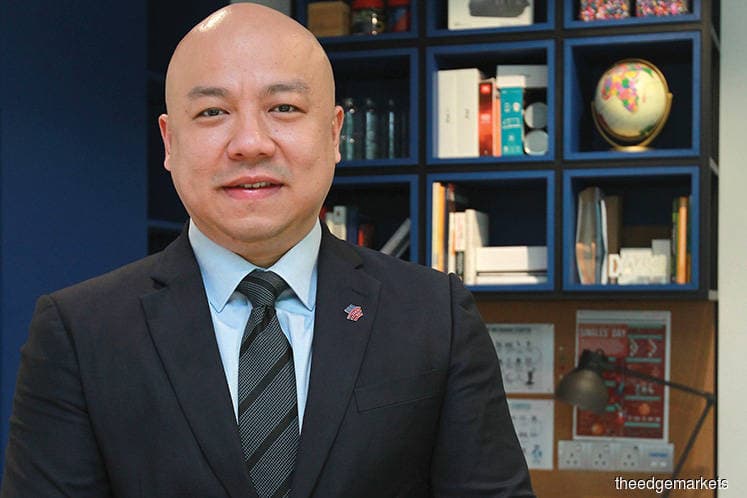
This article first appeared in The Edge Financial Daily on April 8, 2019
KUALA LUMPUR: Small and medium enterprises (SMEs) can step up and scale up by seeking other assistance from banks besides financing, said a senior bank official, noting however that most SMEs do not appear to be aware of the assistance available.
“For SMEs to expand, it is not only funding that is important,” said Terrence Teoh, the head of group SME banking at Hong Leong Bank Bhd (HLB). “Of course funding matters, but on top of that, how you collect your money and manage cash is equally important.
“Most SMEs do not have as much resources as the [larger] corporate and commercial entities. They also do not know what they do not have, especially when they first start out,” Teoh told The Edge Financial Daily in an interview last Friday.
Teoh said SMEs have not been able to use products and strategies to their advantage as banks have designed the platforms and systems for large businesses in mind.
He added that this is because most SMEs need not deal with complicated processes such as imports and exports, compared to their larger counterparts.
“We have tried to drive certain strategies and introduced products that we think SMEs want, thousands of feet above ground. But none in the boardroom are SME owners,” he said, pointing out that they are mostly professional employees of large corporates and banks.
“We have since changed that,” said Teoh, who has more than 15 years of experience in SME banking.
Quickly recognising that SMEs’ needs are less sophisticated, HLB has come out with the relevant digital business solutions. They include a simplified cash management digital platform, HL ConnectFirst Lite, as well as digital systems for human resources (Kakitangan) and accounting (Biztory).
HLB’s tie-up with financial technology companies also allows SMEs to be equipped with merchant terminals at lower cost to help SMEs keep up with the increasing trend of cashless transactions.
Teoh said embracing digitisation by utilising tools could help SMEs reduce labour costs and increase efficiency. But besides day-to-day operations, he advised SMEs to take a longer-term view, especially in future-proofing their businesses.
“A lot of SMEs do not realise that they have increasing liabilities and that they do need the additional protection, especially if they borrow, to buy factories for example.
“Also, they may think that they only need a 90% margin of financing to acquire that factory, without realising that moving into it requires more money to pay for legal and stamping fees as well as relocation of machinery or staff,” he explained.
In cases like this, Teoh said SMEs could leverage property-backed financing schemes, such as HLB’s SMElite which allows SMEs to secure loans for property purchases and working capital financing.
The scheme, guaranteed by Credit Guarantee Corp Malaysia Bhd (CGC), allows qualified SMEs to secure loans of up to RM5 million for property purchases and refinancing, bundled with working capital requirements of up to a 150% margin of financing.
In addition, SMEs could opt for bundled key man protection products financed by banks, which are fully refundable upon policy maturity if there is no prior claim. This could also serve as a saving plan for enterprises.
“SMEs do not buy insurance because they don’t have the cash flow. So, we finance it and help them gain the protection and do savings. It all goes back to our mission of wanting to be the preferred banker of SMEs by helping to grow, expand, manage and protect them,” said Teoh.
SMEs are key to Malaysia’s economy, forming 98.5% of all business establishments and accounting for 66% of total employment in the country. By 2020, they are expected to contribute up to 41% of the country’s gross domestic product, from 37.1% in 2017, according to the report on the midterm review of the 11th Malaysia Plan (2016-2020).
Teoh said HLB — recently named the best SME bank in Malaysia by The Asian Banker — had some 112,000 SME customers, of which 60% fell under the category of microenterprises, as at end-December 2018. Last year, the bank registered a 25.4% year-on-year growth in loan disbursement.
For 2019, Teoh sees the continuing momentum to contribute to another year of double-digit loan and customer count increases, especially with the growing lifestyle, wholesale or retail, and halal SME segments.
“These are really good numbers, and we are still growing strongly. We really think that a holistic and comprehensive offering works best. It is no longer product pushing, but putting customers’ needs first.
“It is because of the development of new technology that we are able to analyse needs and behavioural trends from the use of data, reach out and serve better. When they grow, we grow,” he added.
Teoh said HLB plans to work closely with government agencies, including CGC and Syarikat Jaminan Pembiayaan Perniagaan Bhd. HLB is targeting to approve RM7.5 billion worth of loan funding to Malaysian SMEs this year.